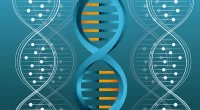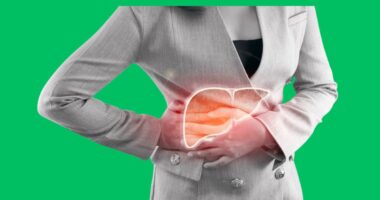Ischemic cholecystitis is a form of gallbladder inflammation that occurs without gallstones or another form of external compression.
It can result from extramural arterial insufficiency due to arterial disease, thrombosis, or trauma, leading to severe ischemia of the gallbladder.
The clinical, laboratory, and imaging properties of ischemic cholecystitis differ from those of simple acute cholecystitis, and intensive perioperative management is recommended for its treatment[1].
Causes
Ischemic cholecystitis can result from extramural arterial insufficiency due to arterial disease, thrombosis, or trauma, leading to severe ischemia of the gallbladder.
Reduced blood flow to the gallbladder can cause chronic or acute inflammation, and it is often a response to critical illness or trauma. It can also be due to vascular occlusion or inflammation of the blood vessels (vasculitis). The pathophysiological mechanism of acute cholecystitis is the blockage of the cystic duct, which causes inflammation.
Ischemic cholecystitis differs from simple acute cholecystitis in its pathogenesis, laboratory findings, and clinical course. Gangrenous and perforated cholecystitis accompany chronic systemic vascular compromise, whereas acalculous cholecystitis is found in a severe acute low-flow state[2].
Symptoms
The symptoms can include:
- Upper Abdominal Pain: Often localized to the right upper quadrant, the pain can be sudden, intense, cramping, dull, or steady. It may last longer than six hours, worsen with deep breaths, and may radiate into the back and right shoulder blade.
- Nausea and Vomiting: Commonly experienced along with the pain.
- Fever and Chills: Fever of over 100 degrees Fahrenheit may occur in some individuals with acute cholecystitis.
- Shortness of Breath: Due to pain, some individuals may experience shortness of breath when inhaling.
- Bloating of the Abdomen: This can be a symptom of acute cholecystitis.
- Elevated White Blood Cell Count: Blood testing may show an increase in white blood cell count, indicating an inflammatory response.
- Elevated C-reactive Protein: Another marker of inflammation that may be elevated in blood tests.
- Gangrenous and Perforated Cholecystitis: These conditions, which can result from ischemic cholecystitis, may present with more severe symptoms and can be life-threatening.
The symptoms can differ from those of simple acute cholecystitis, and a careful clinical history, physical examination, and selective blood tests are important for an accurate diagnosis[3].
Risk Factors
The risk factors include:
- Arterial Insufficiency and Atherosclerosis: Ischemic cholecystitis can result from extramural arterial insufficiency due to arterial disease, thrombosis, or trauma, with a correlation between the development of acute cholecystitis and atherosclerosis.
- Vascular Occlusion and Vasculitis: Reduced blood flow to the gallbladder can be due to vascular occlusion or inflammation of the blood vessels, such as vasculitis, leading to ischemic cholecystitis.
- Chronic Systemic Vascular Compromise: Gangrenous and perforated cholecystitis can accompany chronic systemic vascular compromise, whereas acalculous cholecystitis is found in a severe acute low-flow state.
- Other Factors: Age, obesity, atherosclerosis, severe acute illness, cardiovascular disease, diabetes mellitus, and cerebrovascular disease are also associated with an increased risk of ischemic cholecystitis.
The clinical, laboratory, and imaging properties of ischemic cholecystitis differ from those of simple acute cholecystitis, and intensive perioperative management is recommended for its treatment[4, 5, 6]
Diagnosis
The diagnosis of ischemic cholecystitis can be challenging, as it shares some symptoms with simple acute cholecystitis but has distinct clinical, laboratory, and imaging properties.
The following methods can be used:
- Clinical History and Physical Examination: A careful clinical history, physical examination, and selective blood tests are essential for an accurate diagnosis.
- Ultrasound: High-quality ultrasound can contribute to the diagnosis of ischemic cholecystitis, although it may not be specific for the condition.
- Computed Tomography (CT) Scan: CT scans can help detect the presence of gangrenous ischemia in cholecystitis.
- Cholescintigraphy Nuclear Scan (HIDA): This test examines the function of the gallbladder and can be useful in diagnosing chronic acalculous cholecystitis.
- Magnetic Resonance Cholangiopancreatography (MRCP): This imaging technique can also be used to diagnose ischemic cholecystitis, particularly when other diagnostic methods are inconclusive[7].
Treatment Options
The primary treatment option for ischemic cholecystitis is the surgical removal of the gallbladder, which is the only way to prevent the condition from recurring. The mainstay of therapy for acute acalculous cholecystitis (AAC), a related condition, has been cholecystectomy, with a low morbidity rate and the possibility of being performed as an outpatient surgery.
In cases where the patient is not a surgical candidate or prefers not to undergo surgery, close monitoring of the patient’s symptoms and medical condition can be recommended. A low-fat diet can help reduce the frequency of symptoms, and in patients with symptomatic cholelithiasis, the use of ursodeoxycholic acid (UDCA or ursodiol) has been shown to decrease rates of biliary colic. However, the literature on its role in chronic cholecystitis is limited.
Living with Ischemic Cholecystitis
Living with ischemic cholecystitis may require careful management and, in many cases, surgical intervention. The condition can present with symptoms such as upper abdominal pain, nausea, vomiting, fever, and elevated white blood cell count.
The diagnosis involves a thorough clinical history, physical examination, and various imaging techniques such as ultrasound, CT scan, and HIDA scan. Once diagnosed, the primary treatment is the surgical removal of the gallbladder.
For patients who are not surgical candidates or prefer not to undergo surgery, close monitoring of symptoms and medical condition, along with a low-fat diet, may be recommended. The use of ursodeoxycholic acid (ursodiol) has been shown to decrease rates of biliary colic in patients with symptomatic cholelithiasis, but its role in chronic cholecystitis is limited. It’s important for individuals with this condition to work closely with healthcare professionals to determine the most appropriate management plan for their specific situation.
Ischemic Cholecystitis vs. Acalculous Cholecystitis: Key Differences
Ischemic cholecystitis and acalculous cholecystitis are both forms of inflammation of the gallbladder, but they have distinct differences in their pathogenesis and clinical manifestations. Here are the key differences between the two conditions:
Pathogenesis: Ischemic cholecystitis results from extramural arterial insufficiency due to arterial disease, thrombosis, or trauma, leading to severe ischemia of the gallbladder. Acalculous cholecystitis, on the other hand, results from gallbladder stasis and ischemia, causing a local inflammatory response in the gallbladder wall.
Causes: Ischemic cholecystitis is often associated with chronic systemic vascular compromise, while acalculous cholecystitis is found in a severe acute low-flow state. Acalculous cholecystitis can be caused by factors such as long periods of fasting, total parenteral nutrition (TPN), and drastic weight loss.
Clinical Presentation: Patients with ischemic cholecystitis may present with symptoms such as upper abdominal pain, nausea, vomiting, fever, and elevated white blood cell count. Acalculous cholecystitis can present with symptoms similar to calculus cholecystitis, but patients may also experience more prolonged and less severe symptoms, as well as intermittent and vague symptoms.
Diagnosis: The diagnosis of ischemic cholecystitis involves a thorough clinical history, physical examination, and various imaging techniques such as ultrasound, CT scan, and HIDA scan. Acalculous cholecystitis can be diagnosed using similar methods, but the presence of gallstones may not be a factor in the condition.
Treatment: The primary treatment for ischemic cholecystitis is the surgical removal of the gallbladder. In the case of acalculous cholecystitis, the mainstay of therapy is cholecystectomy, although percutaneous cholecystostomy is gaining acceptance as an alternative.
Latest Research and Future Directions
Recent research has focused on improving the diagnosis and treatment of ischemic cholecystitis. One study published in 2023 aimed to better understand the cause of ischemic cholecystitis by examining the role of microvascular dysfunction in the development of the condition.
The study found that microvascular dysfunction may play a significant role in the pathogenesis of ischemic cholecystitis, and that early detection and treatment of microvascular dysfunction may help prevent the development of the condition. Other research has focused on the use of minimally invasive surgical techniques for the treatment of ischemic cholecystitis, which may reduce the risk of complications and improve patient outcomes.
Future research may continue to explore the underlying mechanisms of ischemic cholecystitis and identify new treatment options to improve patient outcomes. Read more on the New development on diagnosis and treatment of Ischemic cholecystitis









